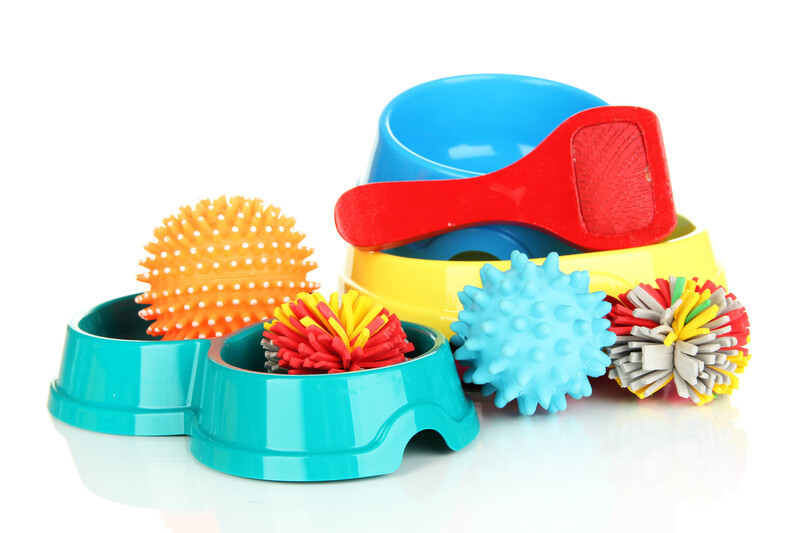Guard Your Sofa: Expert Storage Recommendations
Posted on 17/05/2025
Guard Your Sofa: Expert Storage Recommendations
Your sofa is the heart of your living room, a place of comfort, style, and countless memories. Whether you're moving, remodeling, or simply need to temporarily clear up space, storing your sofa properly is essential to preserve its value and appearance. In this comprehensive guide, we share expert sofa storage recommendations and actionable tips to ensure your beloved furniture remains in pristine condition.

Why Proper Sofa Storage Matters
Storing your sofa may seem straightforward; however, improper storage can result in mold growth, pests, sagging upholstery, harsh odors, and faded colors. Protecting your investment now means fewer headaches and costs later. Let's delve into the best practices on how to store your sofa like a pro.
Table of Contents
- Clean and Prep Your Sofa
- Disassemble When Necessary
- Wrap and Cover for Protection
- Choose The Right Storage Environment
- Sofa Placement and Arrangement
- What To Avoid When Storing Sofas
- Long-Term vs. Short-Term Sofa Storage Tips
- Frequently Asked Questions
Step 1: Clean and Prep Your Sofa for Storage
Cleaning your sofa before storage is non-negotiable. Dust, dirt, food crumbs, and moisture can quickly transform into mold and irreparable damage. Follow these steps for a spotless start:
- Vacuum thoroughly: Use the upholstery attachment to clean both visible and hidden areas, removing all debris and dust mites.
- Spot clean stains: Apply an upholstery-safe cleaner to any stains or marks. For leather sofas, use a specialized leather cleaner; for fabric, stick to water-based or gentle fabric cleaners.
- Allow sofa to dry completely: Moisture invites mold, mildew, and odors. Place your sofa in a well-ventilated space for several hours after cleaning to ensure no dampness remains.
- Deodorize: Sprinkle baking soda, allow it to sit for 15-20 minutes, then vacuum again to eliminate odors.
Tip: For heavy stubborn stains, consider calling a professional upholstery cleaner for a deep clean before storage.
Step 2: Disassemble When Necessary
Modern sofas often feature removable parts like legs, cushions, and modular components. Disassembling your sofa can:
- Reduce the risk of damage during transportation and storage
- Save valuable storage space
- Make it easier to wrap and protect individual components
Remove all detachable items--cushions, arms, legs, and sofa beds--and clearly label or photograph each item. Store hardware (screws, bolts, washers) in a plastic bag and tape it securely to the frame or keep it in a marked box so nothing gets lost.
Step 3: Wrap and Cover for Protection
To truly guard your couch, invest in high-quality storage materials:
- Breathable furniture covers: Avoid plastic wrap, which can trap moisture and encourage mold. Use thick cotton sheets, moving blankets, or purpose-made furniture covers.
- Bubble wrap or foam padding: Protect wooden parts, arms, and legs with bubble wrap or foam sleeves. Secure with painter's tape to avoid sticky residue.
- Sealable bags for cushions and pillows: Store any removable upholstery in breathable, sealable bags to prevent dust and pests.
- Desiccant packs: Place silica gel packets or natural moisture absorbers inside the covers to keep humidity at bay.
Pro Tip: Never wrap your entire sofa in plastic. For long-term storage, plastic can cause condensation and lead to mold or mildew build-up!
Step 4: Choose The Right Storage Environment
The storage location you pick can make or break your sofa's well-being:
- Climate-Controlled Units: Always opt for climate-controlled self-storage facilities, especially for leather or high-end fabric sofas. They keep temperature and humidity in check, safeguarding against extreme heat, cold, and moisture.
- Dry, Elevated Platform: If storing at home, keep your sofa elevated off the ground using pallets or wooden planks. Garages, basements, and attics can be risky due to fluctuating dampness levels and pests.
- Ventilated Space: Good airflow prevents moisture buildup. Avoid tightly packed, stagnant environments.
For extra peace of mind, periodically check on your sofa's condition during storage, especially after heavy rains or humid spells.
Step 5: Sofa Placement and Arrangement
Where and how you position your sofa in storage is crucial:
- Keep Sofa Upright: Store sofas in their natural upright position. Laying them on their sides or stacking can deform cushions and warp the frame over time.
- Leave Space Around: Allow at least a few inches of space around the sofa for airflow and easy access. Direct contact with walls can lead to trapped moisture.
- Stack Items Wisely: Never place heavy boxes or sharp objects on top of your sofa; this can cause permanent dents and tears.
If you must store other items in the same unit, keep them in separate zones to minimize risk of accidental damage.
What To Avoid When Storing Sofas
Even with the best intentions, unsuspecting mistakes can cause significant damage. Guard your sofa by avoiding the following:
- Plastic wrapping: While tempting, plastic doesn't allow your furniture to breathe, resulting in trapped condensation.
- Direct sunlight: UV rays can bleach fabric and leather, leading to patchy fading.
- Piling items atop the sofa: Even a "light" box can deform cushions, frames, and springs if left long-term.
- Neglecting pest control: Mice, insects, and even mold spores love undisturbed upholstery. Use pest-repellent sachets and regularly inspect your storage area.
- Ignoring humidity control: Especially in non-climate-controlled areas, high humidity is the #1 enemy of all upholstered furniture.
Long-Term vs. Short-Term Sofa Storage Tips
Short-Term Sofa Storage (Under 3 Months)
- Cleaning is still essential.
- Use breathable covers, but you can skip disassembly if space isn't tight.
- Store in a space away from direct sunlight and moisture sources.
Long-Term Sofa Storage (Over 3 Months)
- Follow every cleaning, disassembly, and protective step mentioned above.
- Absolutely use climate-controlled storage to prevent temperature and humidity swings.
- Periodically check for dust, pests, and moisture build-up every 3-4 weeks.
- Consider storing cushions separately in sealed containers with natural deodorizers (such as cedar blocks or lavender sachets).
For rare or antique sofas, consult a restoration expert to advise on humidity targets and packing materials, ensuring your heirloom's longevity.
Eco-Friendly and Budget-Friendly Sofa Storage Options
If you're environmentally conscious, here's how to guard your sofa with minimal environmental impact (and cost):
- Use recycled or biodegradable covers: Cotton drop cloths or old bed sheets make excellent covers.
- Repurpose cardboard and newspapers for padding: These absorb moisture and prevent scratches.
- DIY moisture absorbers: Place cups of dry rice or charcoal in the storage area to naturally draw out excess humidity.

Unlocking Hidden Benefits: Why Proper Sofa Storage Pays Off
Learning how to store your sofa doesn't just save money; it also:
- Prevents depreciation--a well-kept sofa retains more of its original value, ideal if you choose to resell or donate.
- Avoids costly repairs such as reupholstering.
- Ensures a fresh start when moving into a new home without the hassle of lingering smells or fabric damage.
- Protects family health by minimizing the risk of mold, allergens, and pests.
Frequently Asked Questions: Guarding Your Sofa in Storage
Q: Is it OK to store my sofa in a garage or basement?
A: Only if these spaces are dry, well-ventilated, and free from major temperature swings. Basements and garages are notorious for dampness and pests, so use raised platforms and check regularly for moisture or insects.
Q: How do I keep my leather sofa safe in storage?
A: Clean it with a leather conditioner, keep it away from direct sunlight and heat, and wrap it in a breathable cover. Moisture control is especially important for leather sofas, as excess humidity can lead to cracking or mildew.
Q: Can I stack other furniture on top of my sofa in storage?
A: No. Stacking items on your sofa invites permanent indentations, frame bending, or upholstery tears. Keep your sofa upright and give it its own space.
Q: Should I leave the sofa legs on or take them off?
A: Remove legs when possible to protect them from scratches and breakage, and to help your sofa fit through tight storage access points. Tape the legs and hardware in a labeled bag to the sofa frame for safekeeping.
Conclusion: Preserve Comfort and Style--Guard Your Sofa with Care
By following these expert sofa storage tips--from thorough cleaning and smart disassembly, to selecting the ideal storage environment and using breathable covers--you'll ensure your sofa emerges from storage looking and feeling as good as the day it went in.
Remember, your sofa is more than just a piece of furniture; it's an investment in comfort, style, and cherished memories. Give it the care it deserves, and when it's time to bring it back into your home, you'll enjoy years more of relaxation and enjoyment.
For more expert tips on furniture care, storage solutions, and home organization, bookmark this page and stay connected!







